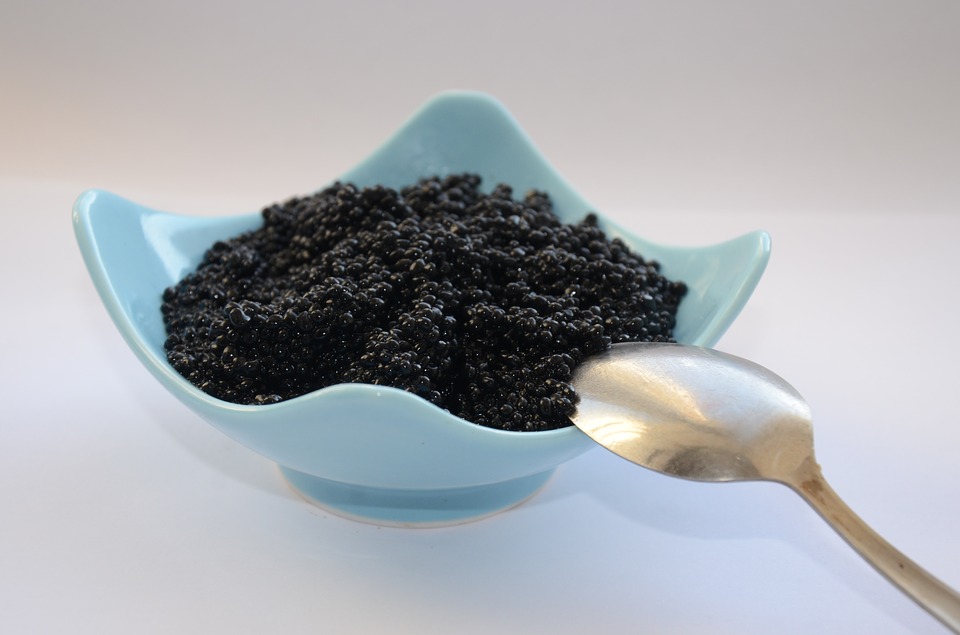Caviar is a popular meal around the world, it fish eggs that are harvested, washed and salted before packaging. They are called roe and come from one type of fish called the sturgeon. Caviar is eaten raw and needs only to ingredients to get it ready for consumption; fish roe and salt. You might think that it has a stinky fish smell but caviar has no stinky smell just a soft orb that you pop into your mouth to release fluids. The amount of salt placed on the caviar distinguishes the different grades of caviar as this is most important ever.
Caviar and butter have much in common since it has that nutty taste that butter has.
Types of Caviar
Apart from the taste, other important factors in caviar include the texture, firmness and size. These complement the experience of eating caviar.
These are some of the different types of caviar:
1. Osetra
This caviar has a nuttier taste with a subtle touch of hazelnut flavour, the main thing you should know about osetra is the tot adapts quickly to different environments and that is why it has a large variety of flavours.
2. Beluga
Beluga caviar has a smooth, bland taste accompanied by a buttery aroma. Although this type of caviar is going extinct, it has been prohibited from distributing its caviar. However, there are farm-raised sturgeons and hybrids of beluga these helps the conservation f beluga.
3. Sevruga
Unlike other types of caviar sevruga releases a very different flavour, it has a crunchy texture and releases the strongest flavour if all caviars.
4. Salmon Roe
The eggs always vary in size, some are large. Salmon caviar is known to be large, saltier and juicier than other caviars. This is mostly because of the features of the salmon fish.
Tips for All Caviar Lovers
1. Learn About it First
Before you try and eat caviar, it is important to know what it is, how it is made and where it is harvested from. From learning this you will know what kind of caviar you want to try.
2. Serve It in the Best Way
The normal way of serving caviar is serving it as an appetizer, ensure that it is served cold not at room temperature. Remember not to serve the roe using metallic utensils as they tend to leave a slight metallic taste on the caviar.
3. Garnishing
Garnishing the caviar will improve its taste; you can garnish with onions, parsley or boiled eggs. This will improve the taste of your caviar.
4. Small Bites
Caviar is taken in a small bit, even smaller than a tablespoon. Taking small bites will help you experience the full taste of caviar
Conclusion
There are more than a hundred varieties of caviar this is because there are other fish that are not of sturgeon family but their role is still consumed. The best way of learning more about caviar is simply going out to the world and experiencing it rather than depending on other peoples’ experiences.

